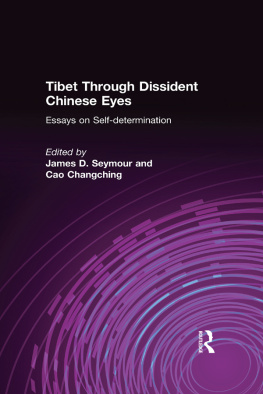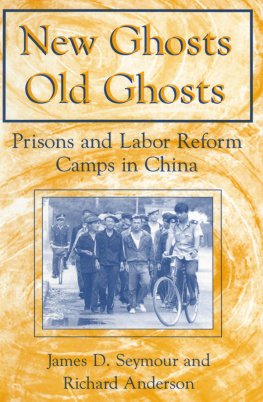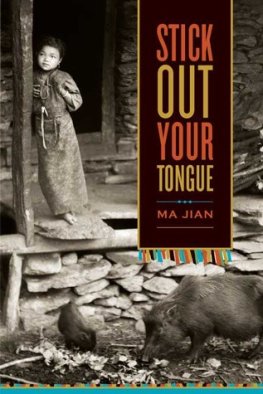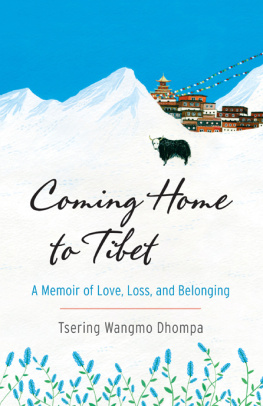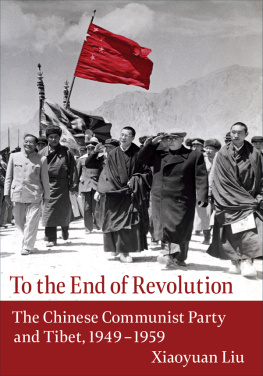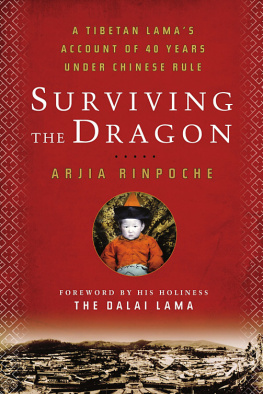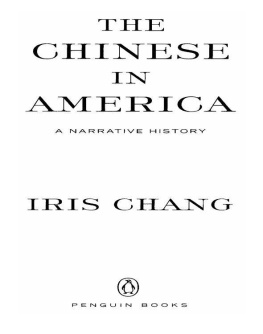TIBET
Through
Dissident
Chinese Eyes
TIBET
Through
Dissident
Chinese Eyes
Essays on
Self-Determination
Edited by
Cao Changching
and James D. Seymour
First published 1998 by M.E. Sharpe
Published 2015 by Routledge
2 Park Square, Milton Park, Abingdon, Oxon OX14 4RN
711 Third Avenue, New York, NY 10017, USA
Routledge is an imprint of the Taylor & Francis Group, an informa business
Copyright 1998 Taylor & Francis. All rights reserved.
No part of this book may be reprinted or reproduced or utilised in any form or by any electronic, mechanical, or other means, now known or hereafter invented, including photocopying and recording, or in any information storage or retrieval system, without permission in writing from the publishers.
Notices
No responsibility is assumed by the publisher for any injury and/or damage to persons or property as a matter of products liability, negligence or otherwise, or from any use of operation of any methods, products, instructions or ideas contained in the material herein.
Practitioners and researchers must always rely on their own experience and knowledge in evaluating and using any information, methods, compounds, or experiments described herein. In using such information or methods they should be mindful of their own safety and the safety of others, including parties for whom they have a professional responsibility.
Product or corporate names may be trademarks or registered trademarks, and are used only for identification and explanation without intent to infringe.
Library of Congress Cataloging-in-Publication Data
Tibet through dissident Chinese eyes: essays on self-determination /
edited by Cao Chang-ching and James D. Seymour.
p. cm.
An East gate book
Includes bibliographical references and index.
ISBN 1-56324-922-7 (c); ISBN 1-56324-923-5 (p)
1. Tibet (China)Politics and government.
I. Tsao, chang-ching. II. Seymour, James D.
DS786.T499 1997
951.505dc21 9726807
CIP
ISBN 13: 9781563249235 (pbk)
ISBN 13: 9781563249228 (hbk)
Contents
Cao Changching
Cao Changching
Ding Zilin and Jiang Peikun
Fang Lizhi
Shen Tong
Song Liming
Wang Ruowang
Wei Jingsheng
Harry Wu
Xiang Xiaoji
Xue Wei
Yan Jiaqi
Yiu Yung-chin
The purpose of this book is to convey to the international reader the thinking of one group of Chinese regarding the Tibet question. It is an outgrowth of a book that was published in Chinese in 1996;1 however, we have not only translated but also expanded and reworked the book to make it accessible to the Western reader.
A word about style and semantics. Generally speaking, in translating and editing, we have taken the view that it is necessary to let the Chinese be Chinese and have resisted the temptation to make revisions just because it might make the text more suitable to Westerners. On the other hand, these writers often express themselves in ways that, if left unmediated, would tend to obscure rather than convey their meaning. For example, the Chinese have their own way of periodizing history: an era is defined by the term that each imperial house remained in power. Western historians tend to doubt that this gives an accurate picture of Chinese history, and it is definitely irrelevant to Tibetan history and to Sino-Tibetan relations. Thus in translation we often render the such-and-such dynasty in terms of the Western calendar.
Likewise, the Chinese have their own ideas of geography. Tibet is seen as roughly equivalent to todays truncated Tibet Autonomous Region (TAR). Because the Chinese authorities control mapmaking and because Western cartographers tend to take their cues from Beijing, the TAR is what shows up on most maps as Tibet. But Tibetans have a different understanding. For most, the TAR has no legitimacy, as it comprises only U and Tsang, areas traditionally administered locally by Lhasa and Shigatse, respectively; there is much more to Tibet than this. Ethnogeographically, it includes the entire Tibetan plateau. Amdo (what Chinese call Qinghai and Southern Gansu) and Kham (which includes what the Chinese consider Western Sichuan) and a small part of Yunnan are also ethnically Tibetan (even though the Lhasa government rarely controlled these areas). Even Chinese tend to consider this all one geographic entity (the plateau), referring to the other provinces as neidi, which literally means interior, but actually refers to the Chinese heartland. Traditionally, neidi was the opposite of bianwai, or the lands outside Chinas national boundaries.
In this volume we will use the term proper, in the dictionary sense of strictly limited to a specific place.2 Thus Tibet proper denotes the TAR or some approximation thereof. The term Inner Tibet3 denotes Amdo (Qinghai and South Gansu), eastern Kham (western Sichuan), and northern Yunnan. Greater Tibet denotes all of these together (Cholkha-sum). Use of the unmodified term Tibet will indicate that these distinctions were not considered significant for purposes of the immediate discussion. Finally, what in Chinese is called the neidi we shall call China proper.
Terms denoting ethnicity present a special difficulty. In English, it usually suffices simply to speak of Chinese and Tibetans. But the Chinese have a multiplicity of terms for Chinese, the most common of which (Zhongguo ren) in the Chinese view includes Tibetans. When they mean to specify ethnic Chinese as distinct from the minorities, they use the term Han. The writers in this book are in the habit of doing just this. But it often appears to be precisely a matter of habit rather than a political statement, and we believe that if they were speaking English they would not insist on this semantic distinction but would speak in the normal English way (Chinese, Tibetans). Of course, when a writer like Wei Jingsheng intends to distinguish between Chinese and Han, we keep the original vocabulary.
We are grateful to our translators Felicity Lung and Connie Cao. Others whose help we wish to acknowledge are Jigme Ngapo, Tseten Wangchuk, Jeanne Marie Gilbert, Linda McNeil, Carol Schiller, and Tang Boqiao. Most especially we wish to acknowledge the untiring help of Connie Cao, who did the lions share of editing and checking the translation. Without her help this book could not have appeared.
Notes
1. Cao Changching, ed., Zhongguo dalu zhishi fenzi lun Xizang (Chinese mainland intellectuals on the subject of Tibet) (Taipei: Shidai Chuban Press, 1996).
2. Websters Ninth New Collegiate Dictionary, p. 943.
3. The term Inner Tibet is not new with us, but we do not use it in precisely the traditional way.
James D. Seymour
The Chinese learned about imperialism the hard way, having themselves been its victim for centuries. Unfortunately, many of the lessons they learned were the wrong ones. Even though the rest of the world has largely abandoned hegemonistic thinking, the Chinese have drawn the conclusion that a modern state must maximize its real estate and territorial waters.1 Almost all Chinese cling to this idea and apply it to various territories and territorial waters to which China has some claim, legitimate or fancied. But in the case of Tibet, a magical, delicate country, though it had often fascinated the Chinese (as it does the rest of us) because of its beauty and spiritualism, only relatively recently has it become a target of Chinese imperialism. Before the present century, it was always others who invaded the country: the Mongols, Manchus, Dzungars, Nepalese, and British. Finally, in the twentieth century for the first time the Chinese (Hans) did so. Now, as so often happens with colonial powers, fascination for the other has given way to condescension and bigotry.

